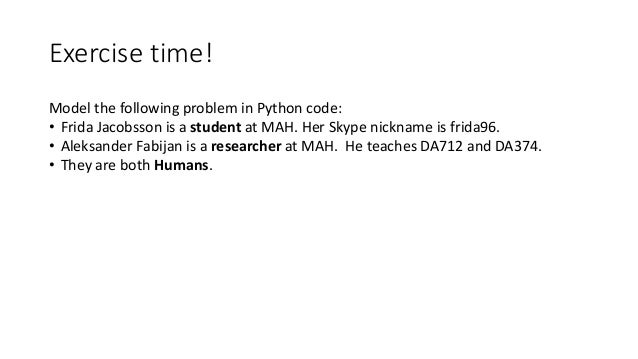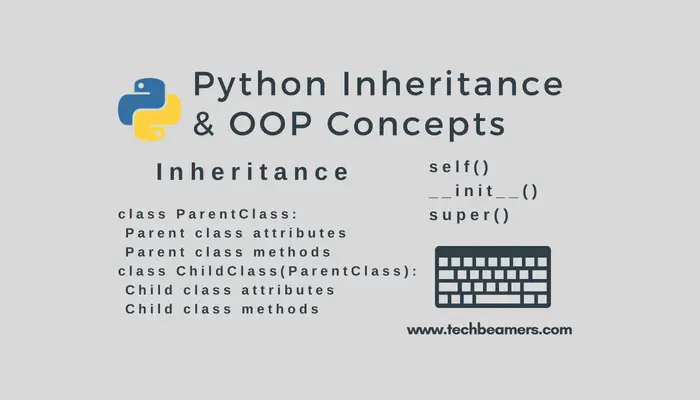


In Python, a class is a blueprint for creating objects (also known as instances). It allows programmers to create abstract classes and methods that define the common behavior, leaving the implementation details to the subclasses. Polymorphism is achieved through method overriding and method overloading.Ībstraction: Abstraction focuses on representing essential features of an object while hiding the unnecessary details. It enables the use of a single interface to represent different types of objects. Polymorphism: Polymorphism allows objects of different classes to be treated as objects of a common superclass. Inheritance promotes code reusability and supports the "is-a" relationship. The subclass can extend or modify the inherited behavior while inheriting the common characteristics of the superclass. Inheritance: Inheritance allows a class (subclass) to inherit properties and methods from another class (superclass). Encapsulation helps in achieving data abstraction and code modularity. It hides the internal details of an object and provides public interfaces to interact with it. Python is an object-oriented programming language that supports next OOP concepts:Įncapsulation: Encapsulation is the mechanism of bundling data (attributes) and methods together within a class. Object-oriented programming (OOP) is a programming paradigm that uses objects and their interactions to design applications. Basic Principles of Object-Oriented Programming

Python oop inheritance how to#
In this article, we'll explore the basics of classes in Python and how to use them effectively in your projects. Classes in Python allow developers to create reusable components for their code, making it easier to maintain and modify.


 0 kommentar(er)
0 kommentar(er)
